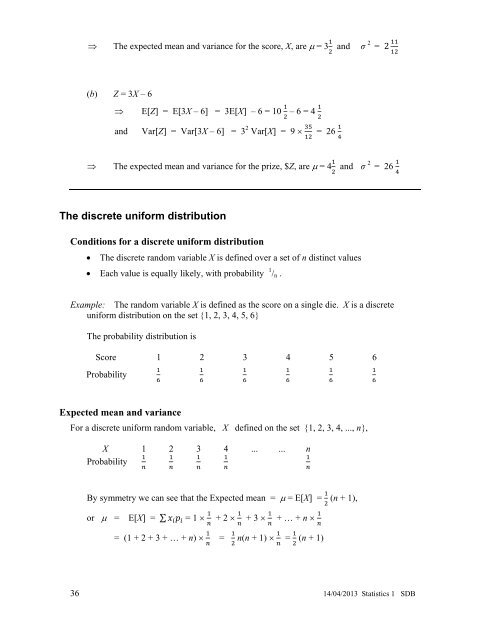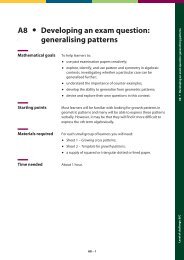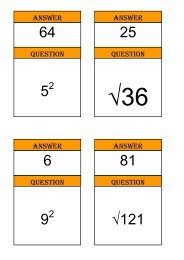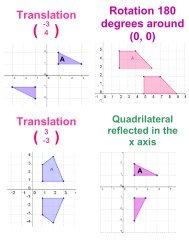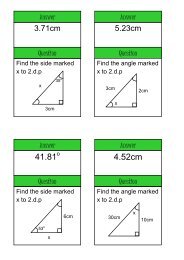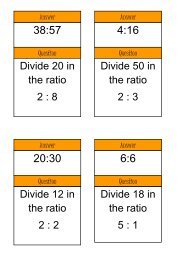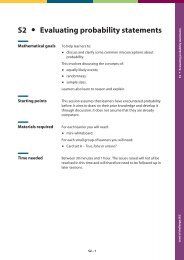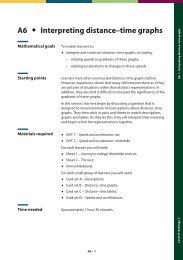Statistics 1 Revision Notes - Mr Barton Maths
Statistics 1 Revision Notes - Mr Barton Maths
Statistics 1 Revision Notes - Mr Barton Maths
You also want an ePaper? Increase the reach of your titles
YUMPU automatically turns print PDFs into web optimized ePapers that Google loves.
⇒ The expected mean and variance for the score, X, are μ = 3 and σ 2 = 2 <br />
<br />
(b) Z = 3X – 6<br />
⇒<br />
E[Z] = E[3X – 6] = 3E[X] – 6 = 10 – 6 = 4 <br />
and<br />
Var[Z] = Var[3X – 6] = 3 2 Var[X] = 9 × <br />
<br />
= 26 <br />
⇒ The expected mean and variance for the prize, $Z, are μ = 4 and σ 2 = 26 <br />
The discrete uniform distribution<br />
Conditions for a discrete uniform distribution<br />
• The discrete random variable X is defined over a set of n distinct values<br />
• Each value is equally likely, with probability 1 / n .<br />
Example: The random variable X is defined as the score on a single die. X is a discrete<br />
uniform distribution on the set {1, 2, 3, 4, 5, 6}<br />
The probability distribution is<br />
Score 1 2 3 4 5 6<br />
Probability<br />
<br />
<br />
<br />
<br />
<br />
<br />
<br />
<br />
<br />
<br />
<br />
<br />
Expected mean and variance<br />
For a discrete uniform random variable, X defined on the set {1, 2, 3, 4, ..., n},<br />
X 1 2 3 4 ... ... n<br />
Probability<br />
<br />
<br />
<br />
<br />
<br />
<br />
<br />
By symmetry we can see that the Expected mean = μ = E[X] = (n + 1),<br />
<br />
or μ = E[X] = ∑ = 1 × + 2 × + 3 × + … + n × <br />
= (1 + 2 + 3 + … + n) × <br />
= n(n + 1) × = (n + 1)<br />
<br />
36 14/04/2013 <strong>Statistics</strong> 1 SDB


